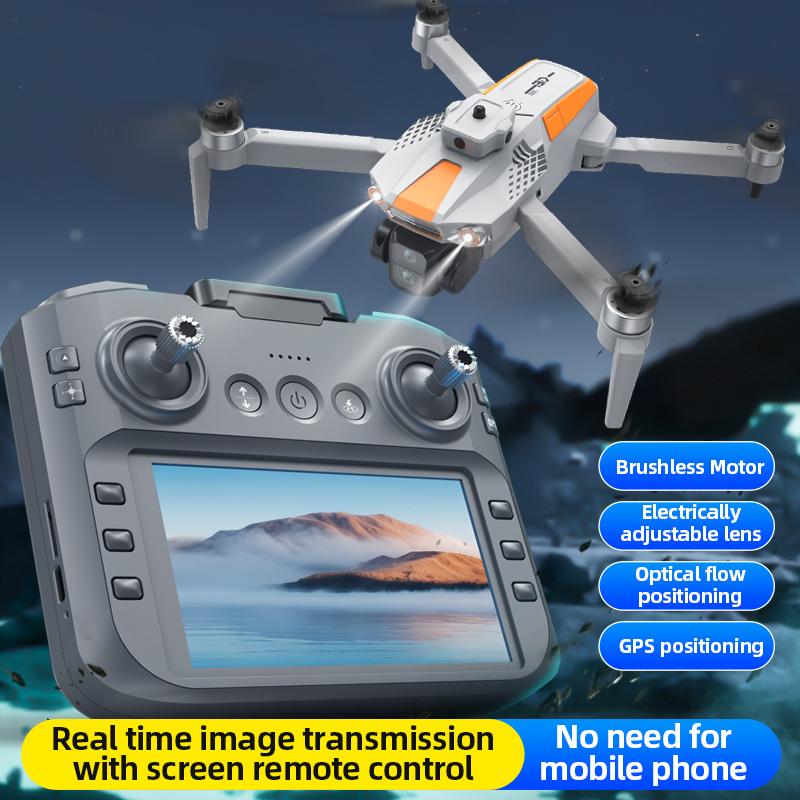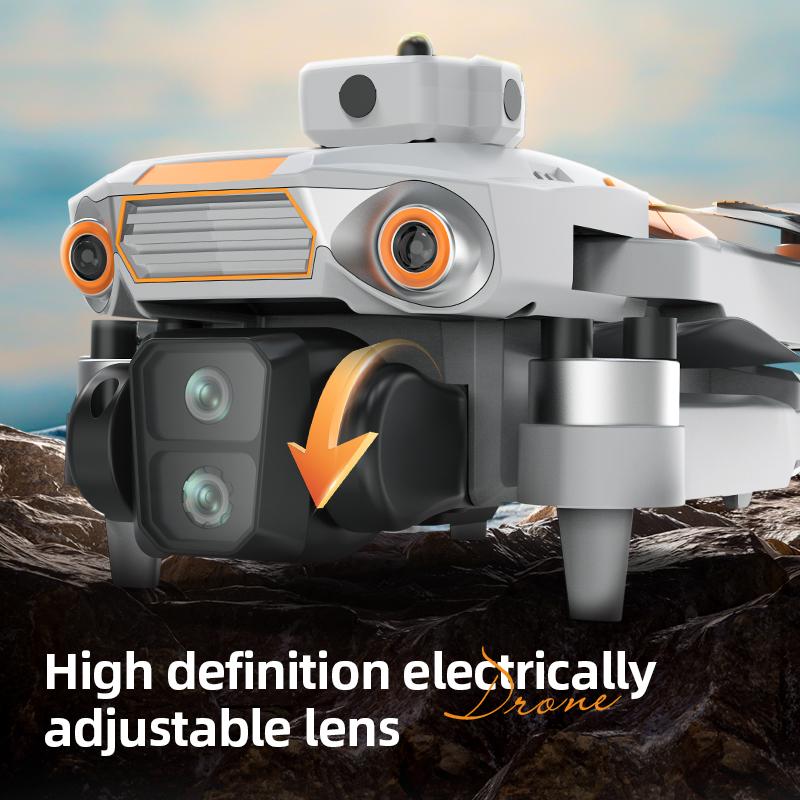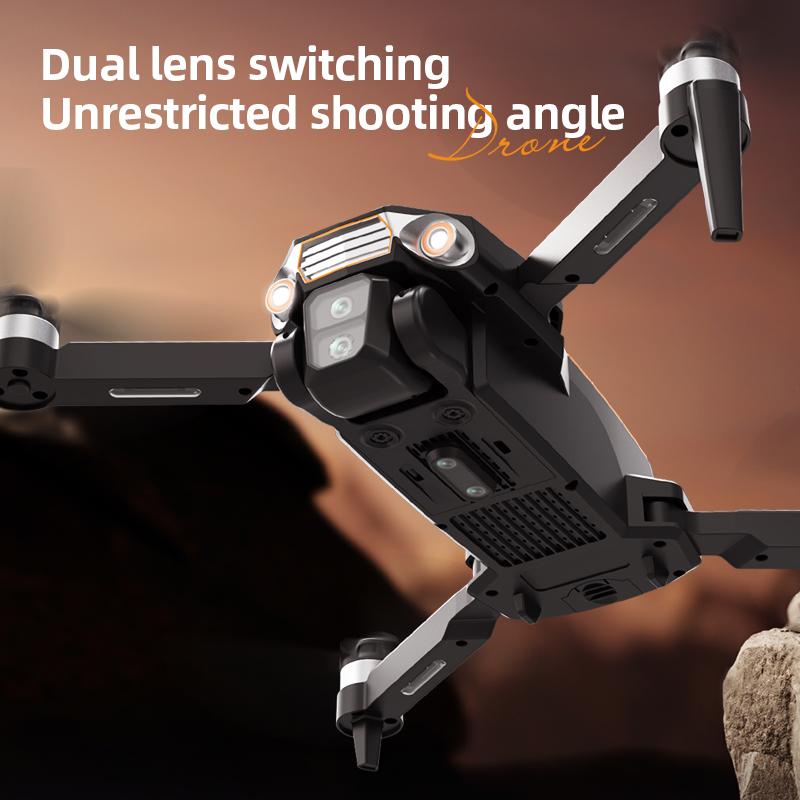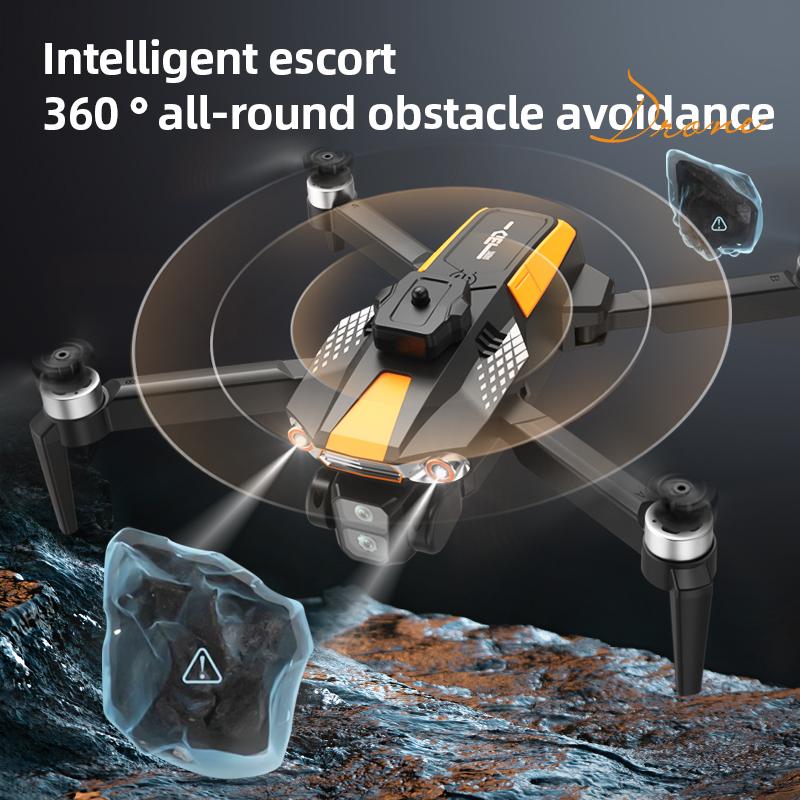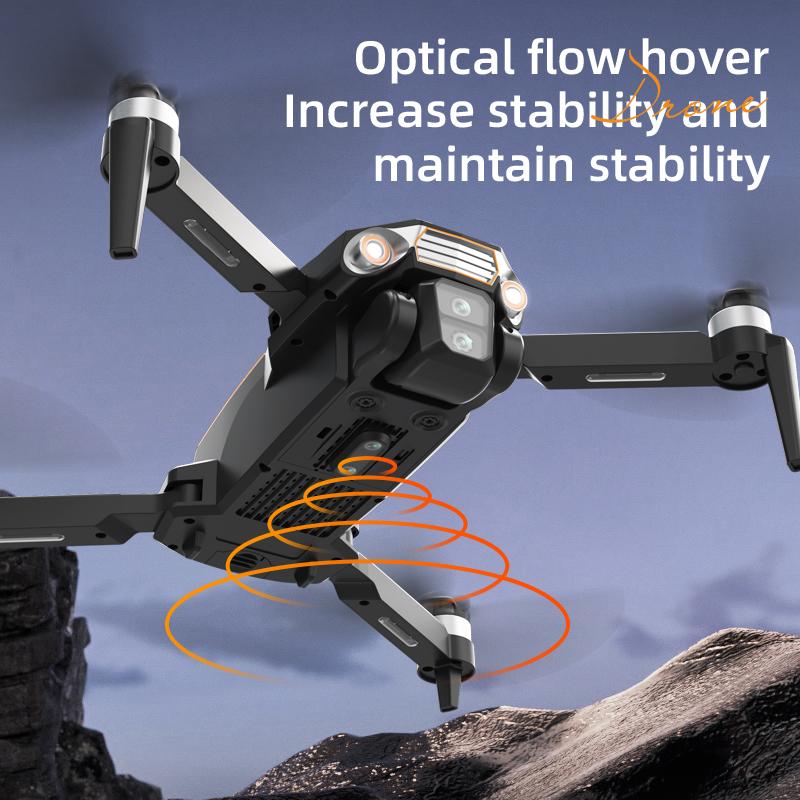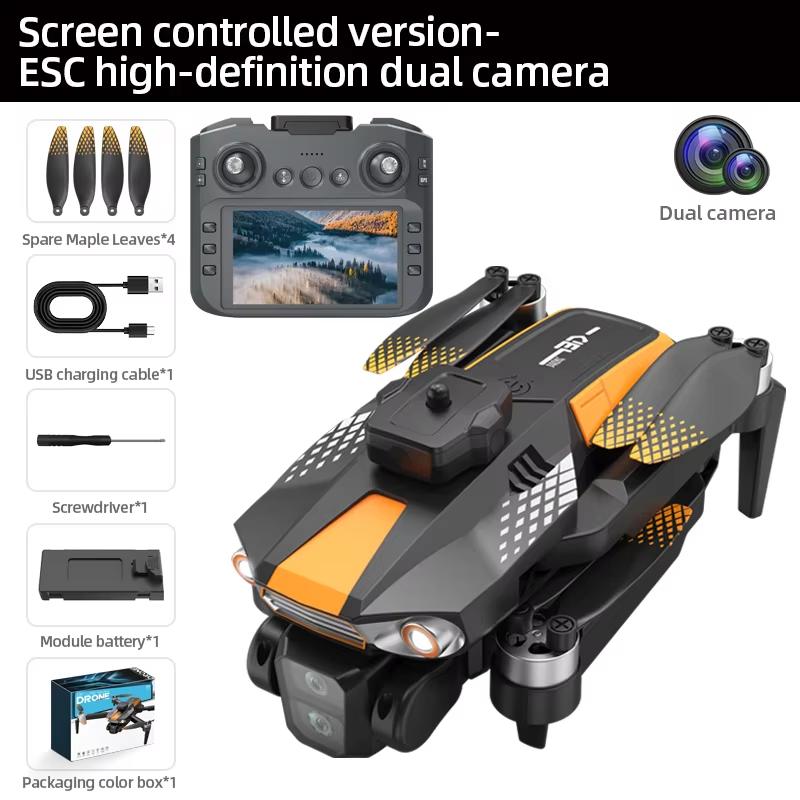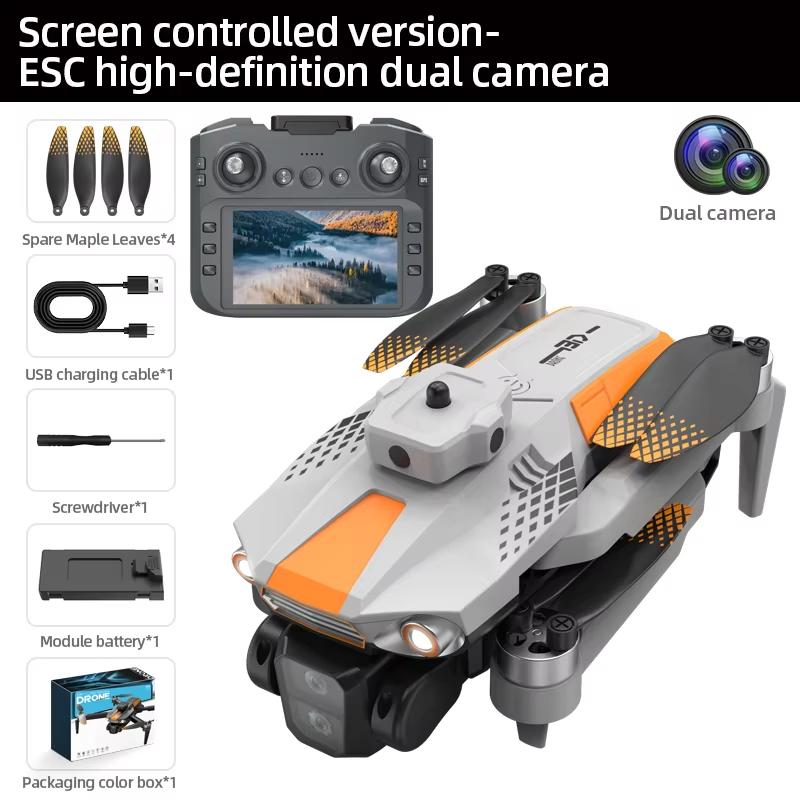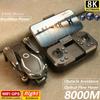Main features
1. The front camera is equipped with wide-angle 4K HD WIFI, and the bottom HD camera has optical flow control, which can switch the shooting angle. The servo gimbal design improves stability, and EIS electronic stabilization is added to make the photos taken clearer.
2. GPS precise positioning can achieve one-key return, no signal return and low battery return.
3. Ultra-long battery life 3.7V 2000mAh lithium battery, battery life is about 22 minutes.
4. Custom route. You can draw the flight route you want on the APP
5. Intelligent following, circumnavigation, palm control, real-time map positioning of drones, out-of-control map planning routes, APP mobile phone control, one-key return, headless mode, up, down, left, right and right flight, optical flow/GPS automatic switching
6. Gesture photography, optical flow positioning, brushless motor, ultra-long battery life, equipped with obstacle avoidance gimbal, can stop quickly when encountering obstacles, and will not collide with obstacles
7. Brushless motor has stronger power and longer service life
8. The product is lightweight and weighs 184 grams, which can avoid air traffic control in various countries (some countries require drones over 250 grams to be certified or registered, and 184 grams can avoid the trouble of certification and registration)
Learning mode
3-speed control (0.5-3 meters/second), height limit 30 meters
Packaging content
Drone*1
Remote controller*1
Battery*1
Fan blades*4
Small USB cable*1
Screwdriver*1
Instruction manual*2
Mobile phone clip*1
Technical parameters
Battery: 2000mAh Hot-swappable design
Safety: EN71/ASTM F963-17 certified
Control: 5G Hz anti-interference
No indoor first flight:
1. Do not choose an environment with many obstacles such as indoors for the first flight.
2. Please make the first flight in an open outdoor environment.
3. Only after you are proficient in operating the aircraft can you choose a flight site.
About the battery:
- Do not charge for a long time.
- Do not expose to direct sunlight.
- Do not use at high temperatures.
- Do not disassemble.
Note:
The battery voltage of the latest purchased products is low, please be sure to fully charge before use!
A. Tips for beginners of aerial photography remote control aircraft:
1. Preparation before flight: Before takeoff, please make sure that your aircraft has undergone a comprehensive pre-flight check, including battery power, aircraft structure and controller status.
2. Find a suitable venue: Find an open, obstacle-free area away from people for safe initial control practice.
3. Learn basic control: Beginners should first learn basic control skills, including take-off, landing, ascending, descending, turning left, turning right and other basic actions.
4. Control altitude: Beginners should try to control the flight altitude and avoid the aircraft flying too high to avoid accidents due to unskilled control.
5. Pay attention to the flight environment: Pay attention to the flight environment and weather conditions, especially factors such as wind. Avoid flying in bad weather or strong winds.
6. Move slowly: When using a camera, move the camera as slowly as possible to obtain a more stable picture effect.
B. Professionals:
1. Optimize internal and external equipment: Professionals can consider upgrading and improving the aircraft's hardware and software to obtain better performance and accuracy.
2. Navigation and automation: Learn to use navigation and automation functions, such as GPS positioning, flight path planning, etc., to improve the efficiency and accuracy of aerial photography.
3. Learn flight skills: Learn advanced flight skills such as hovering stabilization, inverted flight, circular flight, motion tracking, etc. according to actual needs.
4. Shooting details: High-quality shooting requires detail processing, image processing and annotation, which is more suitable for professionals, such as making 3D models or maps.
Regulations and safety: Professionals should strictly abide by local aerial photography regulations, pay attention to flight safety, and ensure the smooth completion of the mission and the safe operation of the aircraft.









